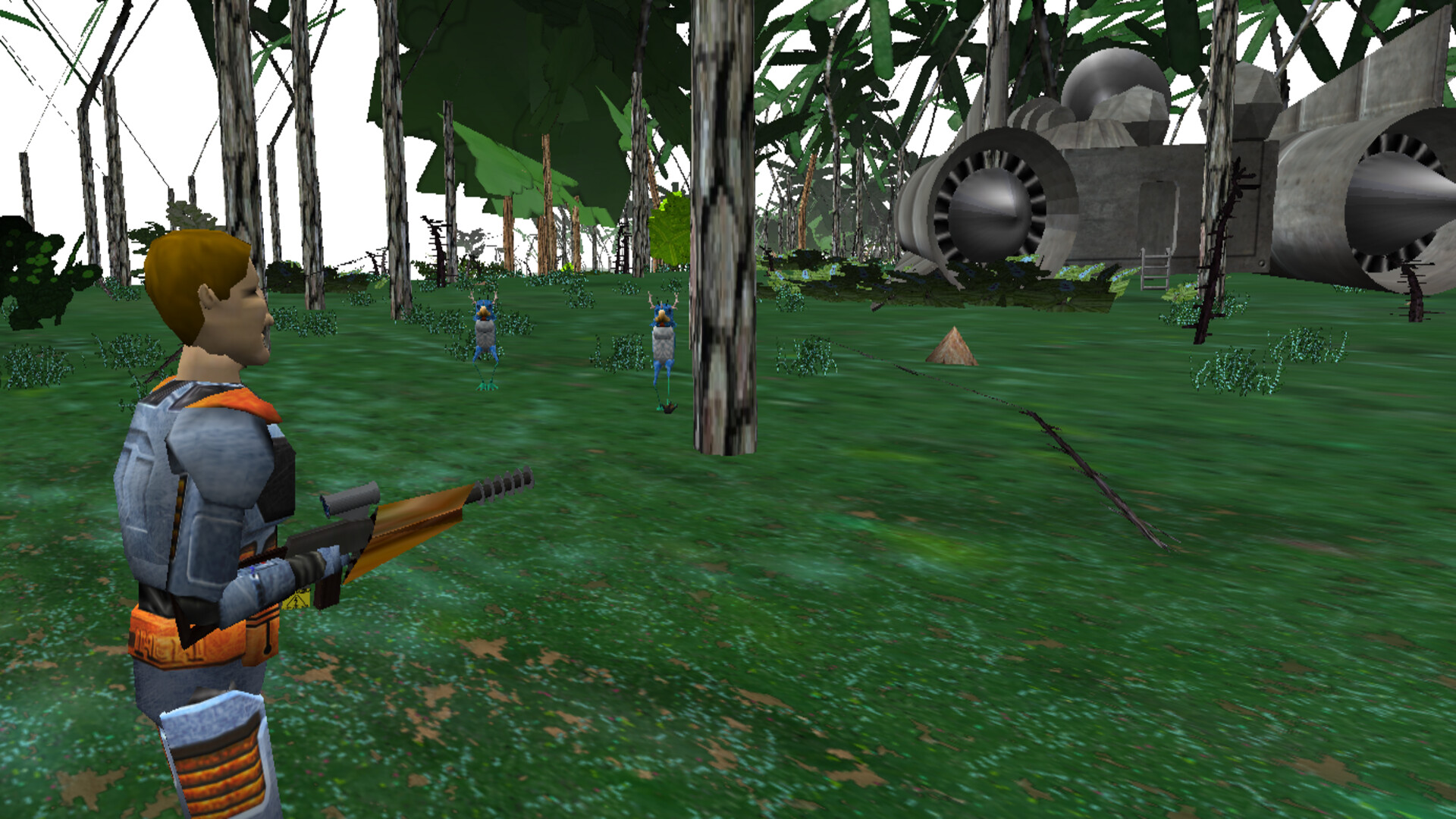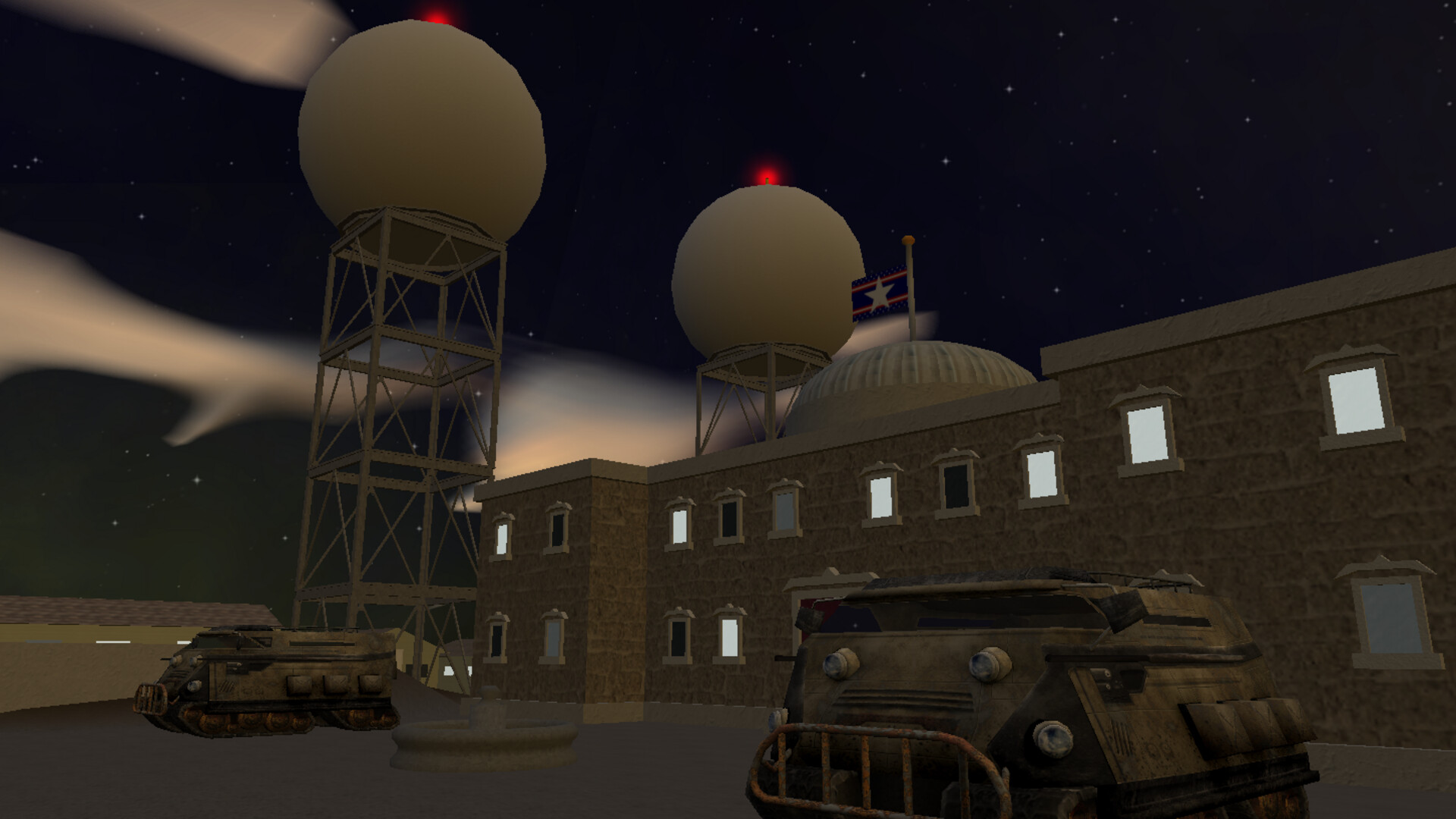Start as an indigenous person on an undeveloped world. Hunt for food. Survive wild animals. Build a home.
Discover natural resources. Build mines and wells to gather resources from the land.
Establish an empire to govern your work.
Found a city to manage its buildings. Build more buildings to manufacture things from natural resources and other things.
Advance your civilization. Make space rockets to explore space. Venture out into your home solar system.
Discover exotic natural resources in dangerous environments on other worlds. Build cities there to harvest resources and send them to factories on the home world.
Travel directly to any star in the sky using a space rocket, a daunting task.
Develop technology to make starships that can travel instantly through wormholes to other solar systems. Walk aboard them. Operate their controls. Command a crew of NPCs. Lift off. Fly up through the atmosphere to outer space. Land on other worlds, anywhere, not at designated places.
Discover natural resources on other worlds, on land, beneath seas, in rings like those of Saturn, in coronas of stars, and in seas of liquefied gases on giant worlds like Jupiter.
Design unique spacecraft and buildings with the built-in 3D modeler. Make them function, with operable doors, landing gear, lights, turbo lifts, transporters, engines, shields, weapons, and more. Share your designs with others in the Steam Workshop.
Not everyone is a 3D modeler; it is not easy. The Steam Workshop offers a growing assortment of fantastic spacecraft and buildings designed by people with a gift for 3D modeling. Their work is there for you to enjoy.
Ringworld Seasons
"It is always summer on ringworlds but the plants have their flowers. Think of it as early summer."
I could not be satisfied with this. After mulling over several possible ways to induce seasons on a ringworld, I settled for modulating the day length as follows.
Shadow panels now modulate the width of the sunlight gap, down to half the normal day length in winter. This is done continuously around the ringworld so all four seasons are present all the time, each in a different quadrant of the ringworld.
When a stargate is opened the shadow panels retract to their summer configuration, with maximum aperture. This means you can no longer look up to see when the shadow panels are in position to open a stargate. Instead the obelisks at the corners now show a light at the top when the shadow panels are in position to open a stargate.
The Control Center story chapter was updated to impart this information.
Ringworld Shadow Panel Connecting Cables
The shadow panels orbit independently of each other. They should be interconnected to give them a coherent structure.
Cables were added at the corners to connect adjacent shadow panels. These "cables" appear to be very thin; they are 90m in diameter. They look as thin as hairs on the statue at the control center if you actually see them.
Potted Plant Growth
Potted plants should grow.
Potted plants now start as a tiny seedling. The plant grows to full size in 5 minutes for ground cover, 10 minutes for shrubs, and 20 minutes for trees. They flower at that time. That is also the first time the plant can be harvested. A potted plant can be harvested every 10 minutes after that.
Tropical and Polar Latitudes
Tropical and polar latitude calculations should consider axial tilt. Current calculation is still a holdover from before worlds had axial tilt.
Done. This will affect existing worlds.
Atmosphere Density Description
Improve atmosphere description with some adjectives at key transitions.
Atmosphere density description now includes these terms. This only applies to worlds in the inner, habitable, and outer orbit zones. Frigid and inferno atmospheres are never breathable or ok for plants.
- Vacuum = 0% density, not breathable, no plants
- Trace = 1% to 9%, not breathable, no plants
- Very Thin = 9% to 14%, not breathable, plants ok
- Thin = 15% to 39%, breathable but not good enough for a homeworld, plants ok
- No density term = 40% to 70%, breathable, plants ok
- Thick = 71% to 85%, breathable but not good enough for a homeworld, plants ok
- Oppressive = 86% to 100%, too much pressure to breath, plants ok
System Survey Information
Show world season, axis and period information on reports.
City reports now show the season in the header information.
Survey scan and XML export now contain the following information.
- Suns - Axial Tilt, Orbital Period for companions.
- Spherical Worlds - Axial Tilt if not a planetoid, Orbital Period, Rotation Period if not a planetoid
- Ringworlds - Orbital Period, Day Period
Minimum Setup
- OS: Ubuntu 22
- Processor: As many CPU cores as possible.Memory: 4 GB RAM
- Memory: 4 GB RAM
- Graphics: OpenGL 3.2
- Storage: 500 MB available space
[ 6487 ]
[ 2143 ]
[ 1910 ]







































